- Home |
- About |
- Contact Us |
- Privacy |
- Newsletter |
- Shop |
- Donate
Mode and Range Worksheets

Welcome to the Math Salamanders Mode and Range Worksheets.
Here you will find a wide range of free printable Worksheets,
which will help your child learn how to find the mode and range of a set of data points.
These worksheets are aimed at students in 5th and 6th grade.
Mode and Range Worksheets Quicklinks
Quicklinks to ...
What is the Mode?
The mode is the most common (or the data point that appears most often) in a set of data.
It can be found by putting the data into an ordered list and seeing which data point occurs most often.
How to find the mode
Step 1) Put the data into an ordered list.
Step 2) Check that you have got the same number of data points.
Step 3) The mode is the data point which is the most common.
Finding the Mode Examples
Example 1) Find the mode of 3, 6, 4, 3, 2, 4, 7, 8, 6, 3, 9
Step 1) Put the data into an ordered list.
This gives us: 2, 3, 3, 3, 4, 4, 6, 6, 7, 8, 9
Step 2) Check the number of data points in both lists is the same.
Both lists have 11 data points.
Step 3) The mode is the number which occurs most often.
Answer: the mode is 3.
Example 2) Find the mode of 0.6, 0.3, 0.4, 0.2, 0.4, 0.7, 0.6, 0.1, 0.4, 0.9
Step 1) Put the data into an ordered list.
This gives us: 0.1, 0.2, 0.3, 0.4, 0.4, 0.4, 0.6, 0.6, 0.7, 0.9
Step 2) Check the number of data points in both lists is the same.
Both lists have 10 data points.
Step 3) The mode is the number which occurs most often.
Answer: the mode is 0.4.
What is the Range?
The range is the gap between the smallest and largest data point.
It is found by putting the data into an ordered list and find the difference between the largest and smallest amount.
How to find the range
Step 1) Put the data into an ordered list.
Step 2) Check that you have got the same number of data points.
Step 3) The range is the difference between the largest and smallest data point.
To find the range simply subtract the smallest number from the largest number.
Finding the Range Examples
Example 1) Find the range of 14, 21, 9, 32, 27, 15, 12, 30
Step 1) Put the data into an ordered list.
This gives us: 9, 12, 14, 15, 21, 27, 30, 32
Step 2) Check the number of data points in both lists is the same.
Both lists have 8 data points.
Step 3) The range is the difference or gap between the largest and smallest numbers.
Answer: the range is 32-9=23.
Example 2) Find the range of 6, 2, -7, 2, -5, 11, 3, -4, 0, 9
Step 1) Put the data into an ordered list.
This gives us: -7, -5, -4, 0, 2, 2, 3, 6, 9, 11
Step 2) Check the number of data points in both lists is the same.
Both lists have 10 data points.
Step 3) The range is the difference or gap between the largest and smallest numbers.
Answer: the range is 11-(-7)=18.
Mode Worksheets
These printable mode worksheets have been carefully graded to ensure a progression in the level of difficulty.
The first sheet involve finding the mode of some positive whole numbers, and decimal with 1 decimal place. More suitable for 5th grade.
The 2nd sheet involves finding the mode of positive and negative numbers and decimals to 1dp. More suitable for 6th grade.
Find the Mode Worksheets
Range Worksheets
These printable range worksheets have been carefully graded to ensure a progression in the level of difficulty.
The first sheet involve finding the range of positive whole numbers, and decimal with 1 decimal place. More suitable for 5th grade.
The 2nd sheet involves finding the range of positive and negative numbers and decimals to 1dp. More suitable for 6th grade.
Find the Range Worksheets
Mode and Range Worksheets
These mode and range worksheets involve finding both the mode and the range of a set of data.
Sheets 1 & 2 are more suitable for 5th graders, and sheets 3 & 4 are more suitable for 6th graders.
The worksheets are as follows:
- Sheet 1 - only positive integers; up to 12 data points;
- Sheet 2 - positive whole numbers for data; up to 19 data points.
- Sheet 3 - positive and negative values; decimals to 1dp; up to 12 data points
- Sheet 4 - positive and negative values; decimals to 1dp; up to 19 data points
More Recommended Math Resources
Take a look at some more of our resources similar to these.
Median Worksheets
The sheets in this section will help you to find the median of a range of numbers, including negative numbers and decimals.
On some of the easier sheets, only odd numbers of data points have been used.
On the harder sheets, both odd and even numbers of data points have been included.
Mean Median Mode and Range Worksheets
The sheets in this section will help you to find the mean, median, mode and range of a set of numbers, including negative numbers and decimals.
There are easier sheets involving fewer data points, and harder ones with more data points.
Lower Quartile and Upper Quartile
If you want some more help identifying the lower and upper quartiles, and also finding the interquartile range then take a look at this page.
Bar Graph Worksheets
The sheets in this section will help you to solve problems involving bar graphs and picture graphs.
There are a range of sheet involving reading and interpreting graphs as well as drawing your own graphs.
Box Plot Worksheets
Here are our selection of box plot worksheets to help you practice creating and interpreting box plots.
Mode and Range Online Quiz
Our quizzes have been created using Google Forms.
At the end of the quiz, you will get the chance to see your results by clicking 'See Score'.
This will take you to a new webpage where your results will be shown. You can print a copy of your results from this page, either as a pdf or as a paper copy.
For incorrect responses, we have added some helpful learning points to explain which answer was correct and why.
We do not collect any personal data from our quizzes, except in the 'First Name' and 'Group/Class' fields which are both optional and only used for teachers to identify students within their educational setting.
We also collect the results from the quizzes which we use to help us to develop our resources and give us insight into future resources to create.
For more information on the information we collect, please take a look at our Privacy Policy
We would be grateful for any feedback on our quizzes, please let us know using our Contact Us link, or use the Facebook Comments form at the bottom of the page.
This quick quiz tests your knowledge and skill at finding and using the mode and range of a set of data.
How to Print or Save these sheets 🖶
Need help with printing or saving?
Follow these 3 steps to get your worksheets printed perfectly!
How to Print or Save these sheets 🖶
Need help with printing or saving?
Follow these 3 steps to get your worksheets printed perfectly!
Subscribe to Math Salamanders News
Sign up for our newsletter and get free math support delivered to your inbox each month. Free seasonal math grab pack included.
Return to 6th Grade Math Worksheets
Return from Mode and Range Worksheets to Math Salamanders Homepage
Math-Salamanders.com
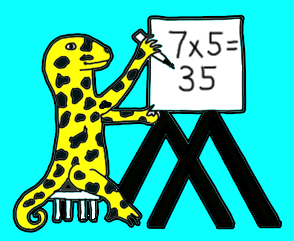
The Math Salamanders hope you enjoy using these free printable Math worksheets and all our other Math games and resources.
We welcome any comments about our site or worksheets on the Facebook comments box at the bottom of every page.


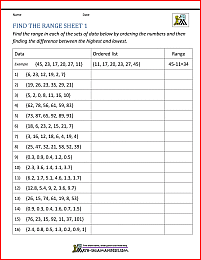



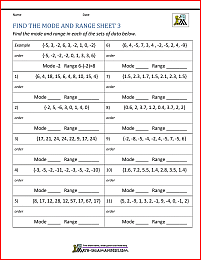

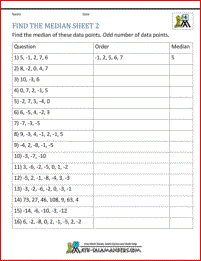
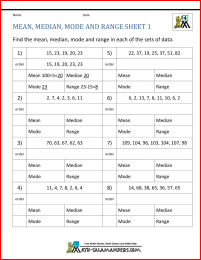

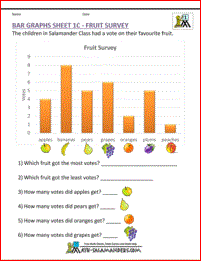


New! Comments
Have your say about the Math resources on this page! Leave me a comment in the box below.